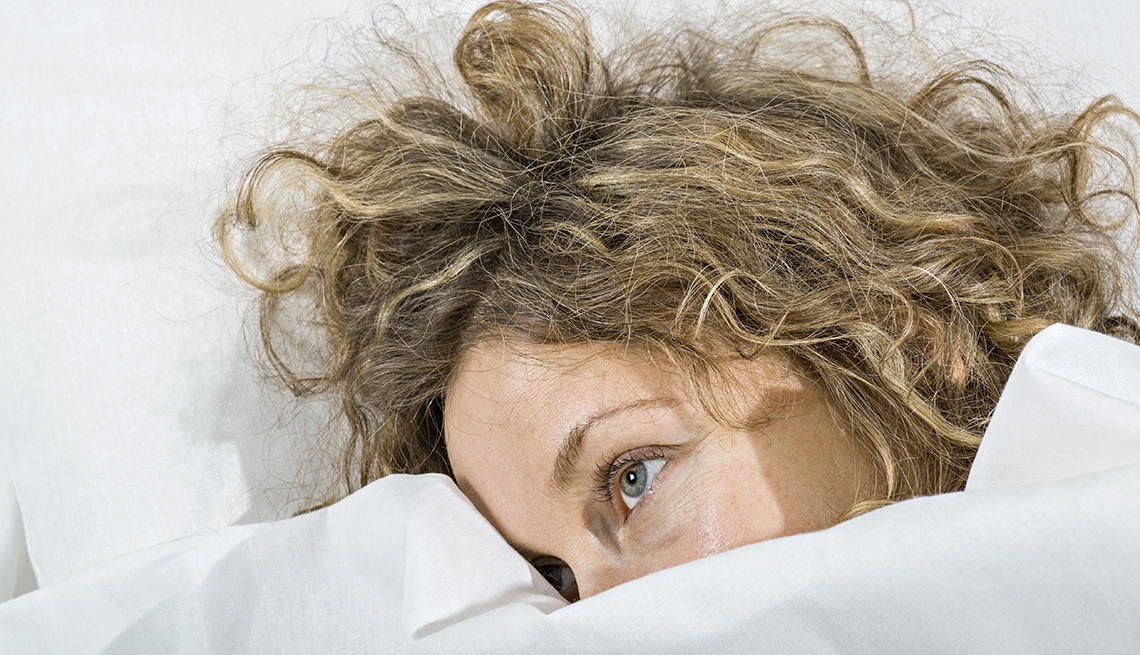
Can talk therapy help you have better sleep?
- Select a language for the TTS:
- UK English Female
- UK English Male
- US English Female
- US English Male
- Australian Female
- Australian Male
- Language selected: (auto detect) - EN
Play all audios:

INSIDE CBT-I In CBT-I, a trained therapist helps you assess and change thoughts, beliefs and habits that fuel insomnia. It usually involves four to six sessions. The process reduces stress
and anxiety at bedtime, retrains your brain and body to strengthen your natural “sleep drive” so you can fall asleep when you pull up the covers, and even resets your body clock for more
regular sleep, Drerup and Arnedt say. Therapy begins with a lesson on the biology of sleep and homework: a daily sleep log that tracks when you got in bed, fell asleep and woke up, and
any disruptions. “Data in the sleep log guides treatment and individualizes the plan,” Drerup says. “And we track it to see outcomes.” You’ll track sleep-robbing thoughts and beliefs — like
“I’ll never get to sleep tonight and tomorrow will be lousy” — that can stir up fear, anxiety and stress as bedtime looms. “What happens over time for people, no matter what triggered the
insomnia, they develop anxiety and worry around sleep,” Drerup says. CBT-I helps you counter these with real-world replacements such as, “I’ve been OK the next day on less sleep” or “It’s
normal to wake up during sleep, I’ll fall asleep again.” Arnedt says: “Unhelpful thinking exacerbates insomnia. People freak out that they won’t be able to function the next day. In
extreme circumstances, they call in sick from work or cancel social events. That just feeds the beast. It’s important to keep a balanced perspective and not be extreme about how you think
about bad and good nights.” You’ll also adopt a new sleep schedule. Instead of going to bed earlier in an attempt to get more sleep, you may be asked to stay up later until you feel sleepy
and/or to get out of bed if you’re not sleeping. The goal is to “squeeze the wakefulness” out of your sleep routine, accustom your brain and body to solid “consolidated” sleep, and help
your mind link your bed with sleeping, not tossing and turning, Arnedt says. That could mean several weeks of short sleep — as little as five or six hours per night, he says — because
you’ll also be instructed to get up at the same time every morning. This helps reset your body clock. “Oftentimes you have to go through some challenges. It’s not magic,” he says. Working
with a therapist can help you cope. Once you’re sleeping soundly, you’ll add back more sleep time, by going to bed earlier, until you arrive at the best sleep number for you. (Most people
need seven to eight and a half hours per night, but the normal range is six to 10 hours, he says.) Conventional sleep hygiene — like having a quiet, dark, comfortable bedroom and cutting
off caffeine early in the day — is covered, but “it’s a small part of CBT-I,” Drerup says. “It’s not effective on its own against insomnia. ... Yes, if I’m drinking a pot of coffee at 5
p.m., it’s probably not good for my sleep. But when people make those changes they can still be frustrated that they can’t sleep.” In fact, if you’ve tried sleep hygiene tips and they
haven’t worked, it’s a great time to try CBT-I, she says.
